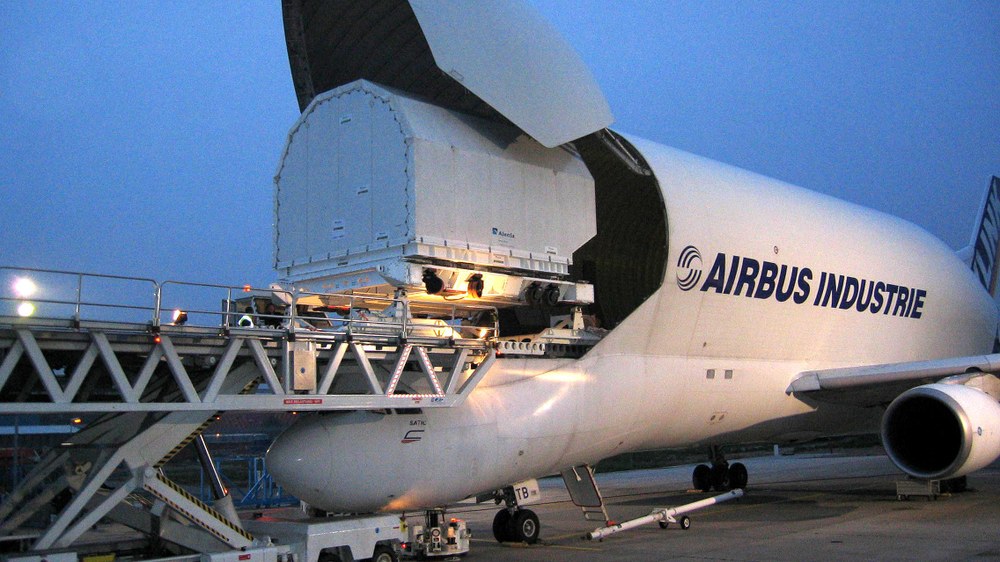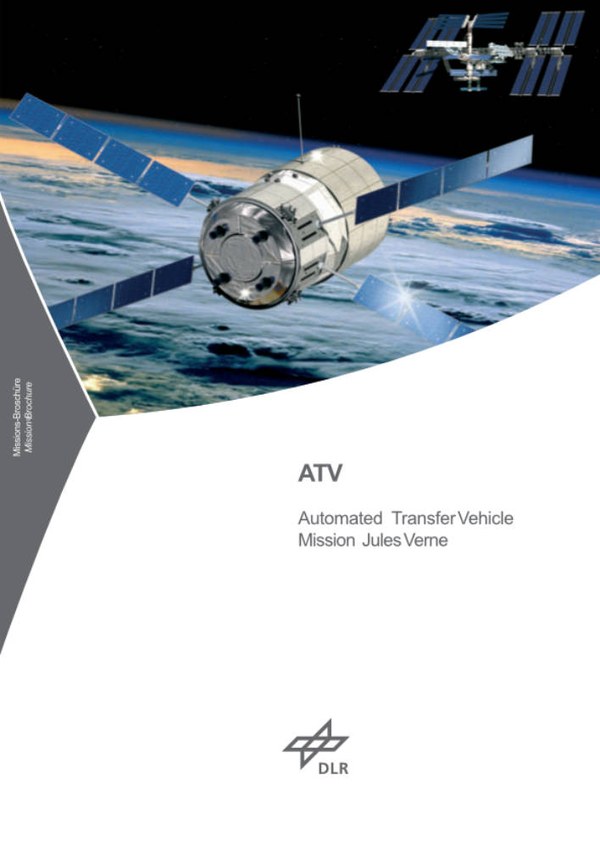ATV – On the way to the launch pad


As early as 1987, the European Space Agency (ESA) was carrying out research into the feasibility of an ATV-like vehicle. Once the ESA Council of Ministers in Granada in 1992 had decided to abandon the programme for HERMES, the manned European space shuttle, there was a significant rethink of the European contribution to the International Space Station (ISS). Under the 'politically-correct' name FREEDOM, this project was to be a collaborative venture between the USA, Europe and Japan. Freed from the issue of an independent manned European shuttle, experts were as one on the need for independent key capacities for the space station - so-called 'servicing elements'.
1995: The ATV space truck is a 'done deal'
Automated Rendezvous and Capturing, the ability to control space craft independently and dock with them, was one of the key capacities. Closely related to this was the idea of an Automated Transfer Vehicle for transportation of goods to and from the ISS. Due to the logistical demands of the FREEDOM space station made at the time, ESA was aiming for up to two ATV launches per year. At least five ATV launches are planned up to 2013, to supply the International Space Station, which has been continuously modified (with the collaboration of Russia since 1993).
Once the operating costs of the ISS had been revealed, a 'barter' accord was struck with NASA. The object of this was to govern the off-setting of operating costs with payments in kind to prevent foreign exchange gains or losses between the parties. In the wake of the decision of the ESA Council of Ministers conference in Toulouse, in 1995, on European co-operation with the ISS programme, the ATV went into the development and construction phases.
Wide-ranging test programme completed
Since mid-2004, the 'Jules Verne' prototype has been subjected to wide-ranging tests at the European Technology Centre (ESTEC) test centre in Noordwijk (NL). Everything has to run smoothly if international space missions are to be successful: repairs are not possible after launch. Thus all manoeuvres, procedures and functions have to be tested in extensive campaigns in which no expense is spared. The tests simulate the extreme ambient conditions in orbit in the 'thermal-vacuum test'. Xenon high-intensity discharge lamps are used to achieve the required solar radiation in an otherwise empty room under vacuum conditions. Engineers can test the ATV and its various components in circumstances approaching those in space. In the electromagnetic compatibility test, carried out in the Faraday cage, engineers can test how well the various electrical and electronic components work with each other. Malfunctions which could cause one of the electrical components to fail can thus be traced.
Shaken (but not stirred) before launch
The ATV will also be subjected to a mechanical stress test on an instrument called a shaker. This is where the space craft will be put through all the stresses and strains of launch and thrust phase on the payload. Apart from vibrations occasioned by the engines, this includes the process of jettisoning stages and the payload fairing, or other forces, such as gusts or a steering manoeuvre.
Docking manoeuvres on Earth
The docking tests at the French Délégation Générale pour l'Armement (a French Ministry of Defence agency), near Versailles were a spectacular sight. In a long hall normally used by the Navy, the final 300 metres of the ATV's docking procedure with the ISS were successfully tested several times over. The tests involved fitting ATV proximity sensors to a robot arm. On the other side was a simulation of the docking port of the Russian service module Zvezda for the robot arm to aim at.
Arrival in Kourou
In mid-July 2007, ATV-1 Jules Verne was shipped off to French Guyana from Rotterdam. On 31 July, the cargo vessel MS Toucan reached the port of Kourou with the carefully packaged ATV-1. From there, the container with its precious cargo continued its journey to the European space centre by semi-trailer.
In the halls at the launch pad site, the containers were unloaded by the engineers. In the clean rooms, they firstly reassembled the ATV. Outstanding tests were also carried out in Kourou. In December 2007, the countdown to the launch could begin: the payload was loaded into ATV-1 Jules Verne and, in January 2008, the ATV was fuelled. At the same time, the carrier rocket, Ariane 5, was put together with the ATV and prepared for launch.
Successful first launch
ATV-1 was successfully launched from the European spaceport in French Guiana on 9 March 2008 and docked with the International Space Station (ISS) after less than a month. During the docking phase, the payload was transported to the ISS and the ATV was then loaded with approximately two tonnes of waste from the space station and 260 litres of waste water. On 5 September 2008, the ATV separated from the ISS again and entered Earth's atmosphere in a controlled manner a few weeks later, where it burned up.
ATV-1 was followed by ATV-2 'Johannes Kepler' on 16 February 2011. ATV-3, named 'Edoardo Amaldi', was launched on 23 March 2012, and ATV-4, named after the German physicist Albert Einstein, set off for the ISS on 5 June 2013. The launch of ATV-5 'George Lemaître' took place on 30 July 2014.


